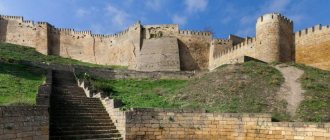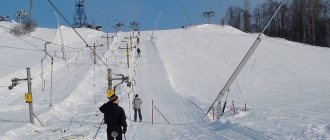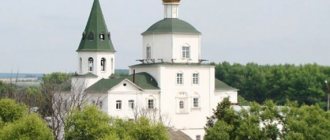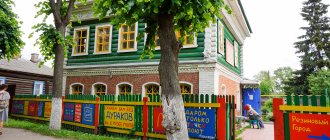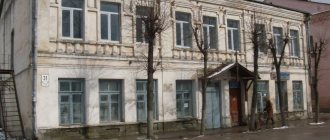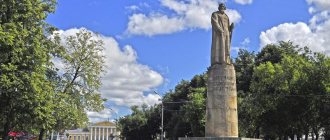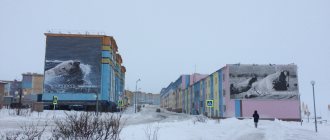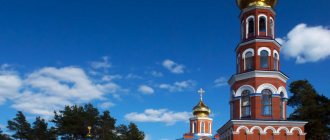Year founded: 1926
Naro-Fominsk celebrates City Day on
the last Saturday of May
.
In 2021,
this date is
May 29
.
In 2021, due to the pandemic, mass events in honor of the city day are canceled or may be postponed
Naro-Fominsk
Naro-Fominsk
is a Russian city, the administrative center of the Naro-Fominsk district of the Moscow region. The city is located southwest of Moscow, on the Nara River and its tributaries Gvozdnya and Berezovka, 56 kilometers from the Moscow Ring Road.
Naro-Fominsk became a city in 1926
, and the first mention of the villages of Fominskoye and Nara goes back to the charter of Ivan Kalita
in 1328
. In the 16th-17th centuries, the village of Fominskoye was the patrimony of the Baryatinsky princes, and the village of Malaya Nara was the patrimony of the Savvino-Storozhevsky Monastery.
During the War of 1812, the city of Vereya, in the Naro-Fominsk region, became the center of military operations. The city was occupied by the French army, and M. Kutuzov ordered Major General I. Dorokhov to liberate it, whose detachment was able to take Vereya by storm. Later, Napoleon himself spent the night here in the Church of St. Nicholas the Wonderworker, and from here he wrote to his wife. The artist Vereshchagin reflected this in his painting “At the stage. Bad news from France." It depicts the emperor deep in thought against the backdrop of the temple interiors. Let us note that, already leaving Nara, Napoleon, in despair, ordered the wooden church to be burned.
The Great Patriotic War did not pass by these places either. In October 1941 - January 1942, the Soviet army stopped the advance of German troops here, rushing towards Moscow. The Nara River has since been called the “gate to Moscow,” which the enemy never managed to open. The fighting lasted two months, about 700 residential buildings and a weaving factory, built at the end of the 19th century and being an urban planning enterprise, were destroyed.
The ashes of 15 thousand Soviet soldiers who gave their lives for their homeland rest in single and mass graves. In memory of those heroic days, more than 130 monuments were erected in Naro-Fominsk and its environs. One of them is a monument to the T-34-85 tank, the crew of which accomplished a real feat in October 1941. Under the command of Lieutenant Georgy Khetagurov, the crew twice crossed the territory of the city occupied by the Germans. In one hour and forty minutes—that’s how long the “fiery flight” of Khetagurov’s crew, as the division called it, lasted—the tankers destroyed about two hundred Germans, several guns, cannons and machine-gun nests.
A monument to the T-34-85 tank, whose crew accomplished a real feat in October 1941.
In 2009, Naro-Fominsk was awarded the honorary title of “City of Military Glory
.
Among the attractions
cities - Alley of Hero Cities, Museum of Vera Voloshina - Zoya Kosmodemyanskaya's fighting friend, ancient estates - Staronikolskoye, Spas-Kositsy, Lyubanovo, Petrovskoye.
There are also unusual places in the city. Many come to meet the owner of the Toy House and look at his “estate.” The house itself, the area with trees and all the outbuildings here are hung with toys. There is even a sign not far from the house: “A wizard lives here.”
And one of the mysterious places in the Naro-Fominsk region is the village of Krugi. Actually, this is not even a village, but just two houses standing in a round clearing. It is remarkable that from this clearing through the forest radial clearings diverge like rays. This is clearly visible in the image from space. No one knows where these rays came from, but they were already on the map of 1860. There is a version that in the center of the clearing there once stood the house of a landowner who loved to hunt wild animals. He ordered clearings to be cut, from the far ends of which the beaters drove the beast towards him, and he himself allegedly stood at his house with a gun and shot game.
Not far from the village of Krugi, just through two rays, there is a road to the Trinity-Odigitrievskaya Zosima Pustyn - a convent founded in 1826 by Elder Zosima.
Day of the city
residents celebrate on the last weekend of May.
Temples and chapels of Naro-Fominsk
St. Nicholas Church
- Address: General Efremov, 2.
Until 1812, instead of the current parish, there was a wooden St. Nicholas Church and, according to legend, Napoleon Bonaparte himself stayed overnight there during the Patriotic War. During the retreat, the French burned the temple.
In 1845, construction began on a new, more durable sacred structure, designed by the architect Burenin. Funds for construction were allocated by local landowners – Skuratov and Lukin. The first parishioners were received in the renovated church in 1852; at that time it was one of the most beautiful in Russia.
St. Nicholas Church has a rich history: after the revolution, it was first turned into a guardianship for the poor, then into an almshouse, then closed completely, and during the war years it was mercilessly looted. In the post-war period, it first became a warehouse, and later - the historical museum of Naro-Fominsk. In 1989, they decided to return it to believers. Thus began a restoration that lasted until 2004.
Now the Church of St. Nicholas lives a full-fledged Orthodox life: services and sacred rites are held there, and Sunday schools are open for parishioners of all ages. It possesses such shrines as particles of the relics of the great martyrs, ancient icons, and arks.
Chapel of Our Lady of the Unquenchable Lamp
- Address - pl. Victory, 1.
The “Unquenchable Lamp” chapel appeared in Naro-Fominsk in 1990 - as a repository of the Eternal Flame in memory of the fierce battles that took place at this place in 1942 for the defense of Moscow . It fits organically into the composition of St. Nicholas Church and, along with it, is an important landmark of Naro-Fominsk.
Temple of New Martyrs and Confessors
- Address: Shibankova microdistrict.
In the north of Naro-Fominsk there is also an Orthodox parish - small, but very interesting. It cannot boast of much history, since it was erected in 2021. It has only one dome - gilded, with a cross. The facade of the building is whitewashed, the roof is dark. The cathedral is surrounded by a beautiful park of trees, apparently planted a long time ago.
Museum attractions
Museum of History and Local Lore
- Address – Zhukova, 8.
On May 9, 1973, on Victory Day, the official opening of the Naro-Fominsk Historical and Local History Museum took place, moved to another building. Previously, it was located within the walls of the Church of St. Nicholas the Wonderworker.
Today its museum collection consists of more than 25,000 exhibits. Everything is collected here: the ethnography of the region, and the history of the existence of Naro-Fominsk. The exhibition is located on two floors.
The first one contains everything related to the history of the town and the place where it is located. And on the second, visitors can see an exhibition of works by animal artist V.V. Andriyashina are very interesting naturalistic figures of animals, made in life size from paper and plaster.
The museum constantly hosts exhibitions dedicated to the valiant glory of the city, the history of the world-famous record plant located nearby, and the famous residents of Naro-Fominsk.
Present day
By the end of the first decade of the new century, the city began to come to life. Today this is the new Naro-Fominsk where there is a meat processing plant and a dairy plant. Also working successfully here:
- Naro-Fominsk house-building plant;
- knitting factory;
- Keralite LLC;
- Ball Beverage Packaging Naro-Fominsk LLC;
- Naro-Fominsk Machine-Building Plant;
- Naro-Fominsk plastics plant.
With the advent of jobs, the dynamics of the population decline stopped at around 62 thousand people.
Naro-Fominsk is being improved, new residential areas are being built.
The city is connected to Moscow by regular bus routes served by comfortable cars. The capital can also be reached by high-speed trains.
Monuments and memorials
Monument "Tank T-34"
- Address - pl. Victory, 1.
Hapo-Fominsk is a city of military glory. The battles near Nara belong to the category of those whose memory will live for centuries.
In the fall of 1941, it was here that the Red Army stopped the advance of the German army. The feat of G.G. has gone down in history. Khetagurov, who destroyed the enemy headquarters on a KV-1 tank, causing irreparable damage to the enemy. There is a version that the T-34 Tank stands exactly on the spot where this event took place.
The T-34 Tank serves as a reminder of the power of our weapons and the valor of the Soviet people during the war.
Monument to M.G. Efremov
- Address - pl. Victory, 1.
Lieutenant General Mikhail Grigorievich Efremov - commander during the Civil War. During the Second World War, he was the commander of the 33rd Army, which defended the approaches to the capital Moscow near Naro-Fominsk.
In the spring of 1942, the Germans surrounded the army. In order not to be captured, three times wounded Efremov decided to shoot himself. At the same time, his entire staff committed suicide. The invaders did not take anyone from the 33rd Army prisoner voluntarily - this is what German archive sources say.
Protiney, having captured the line, paid tribute to the worthy enemy by burying the lieutenant general with honor near the village of Slobodka. Efremov was awarded the title of Hero of the Russian Federation in 1990.
Stella "City of Military Glory"
- Address: Victory Square.
Hapo-Fominsk became the “City of Military Glory” in 1990, and a year later a commemorative stele with the coat of arms of Russia 12 m high was erected on the main city square. At the foot of the monument there are three tables: one with a literal presidential decree conferring the honorary title on the city, another with a description of the feat of Naro-Fominsk during the Second World War, the third contains tragic figures for the number of victims and destruction that the region suffered during the war.
Monument "Black Tulip"
- The address is a square on Lenin Street.
“Black Tulip” is a memorable tribute to the valiant internationalist soldiers who gave their lives in the line of duty in Afghanistan. The opening of this memorial took place in 1991.
All honors for soldiers who fought in Afghanistan take place near this sad memorial. The memory of those who did not return from the Afghan war is also honored here. In the Narofominsk region, almost 400 people served in Afghanistan, 23 of them were unable to return alive.
The monument is located in Memory Square. Next to it there are memorial plaques with a list of dead residents of Naro-Fominsk who took part in other local clashes and conflicts.
Decoration sculptures in Naro-Fominsk
"Hearts of Lovers"
- Address – Zhukova, 12.
The composition “Hearts of Lovers” was created by sculptor V.F. Mitroshina. It decorates the square near the Wedding Palace and is made in the form of an arch of two hearts, under which two lovers walk towards family happiness.
Today it is a traditional place for newlyweds, who at the end of the wedding ceremony symbolically pass under this arch. “Hearts of Lovers” is the most romantic monument in Naro-Fominsk and one of its highlights.
"Emelya on the stove"
- Address: Marshala Zhukova, 6.
This sculpture appeared in Naro-Fominsk in 2008 and immediately won the love of townspeople and visitors. It is believed that it is dedicated to travelers. The fairy-tale character Emelya, with an umbrella in his hand and a suitcase at the ready, sits on a stove resting on wheels from four types of transport - from a cart, from a car, from a motorcycle and from an airplane, which symbolize the evolution of means of transportation.
Pike also plays an important role in this funny composition. There is an opinion that your cherished wish will come true if you entrust it to this fish. The main thing is not to forget to say the famous saying from a Russian folk tale.
The author of the sculpture is the monumental artist, blacksmith G.V. Novoselov. “Emelya on the stove” is not his only creation in Naro-Fominsk. He is also the author of the “Black Tulip”, a monument to fallen soldiers while serving in Afghanistan, and the forged doors in St. Nicholas Church. But “Emelya on the Stove” is unique in that there is not a single separately cast element in this sculpture.
Parks and squares of Naro-Fominsk
Vorovsky Park
The main park of Naro-Fominsk is located on a historical site. The estate of the princes Shcherbatovs, which was called “Nara,” was once located here. The square was an integral part of it. The estate itself burned down at the beginning of the 20th century, leaving no photographs of itself.
The only thing left of its former luxury is this park with its magnificent linden alleys. After the revolution, he received the name of Vaclav Vorovsky, a comrade-in-arms of V.I. Lenin. Now it is the city's Central Park of Culture and Recreation and a place of attraction for citizens. All public holiday celebrations, cultural and sporting events are held here.
In 1941, there were such fierce battles with the Germans advancing on Moscow that after the war the park had to be restored within 10 years.
In the park there is the “Walk of Glory of Heroes”, inaugurated on December 24, 2014. The place was not chosen by chance: here in 1979 a memorial complex appeared in memory of the soldiers who died in battles for their Motherland during the war. It is in the park area that the largest burial place of Soviet soldiers within the city is located.
Shady alleys make Vorovsky Park convenient for walking, and sports fans can rent sports equipment and take care of their health at the sports complex located here or kick a ball on the football field. On weekends there is a shooting range, children's and sports trampolines, and a ropes course. There is a playground for children next to the sports complex.
Victory Park
- Address – Profsoyuznaya, 41.
Victory Park is located on the very bank of the Nara River. In its central part there is a Monument to the fallen pilots during the Second World War in the form of an airplane soaring into the air. There is a fountain next to it. The picturesque and cozy place is a favorite walking place for many tourists and residents of Naro-Fominsk.
Bobruisk public garden
- Address – Kalinina, 8a.
The square is so called in honor of Bobruisk, the sister city of Naro-Fominsk, and “square” because there are many children’s playgrounds, slides and cute fairy-tale sculptures made of wood, which create a special atmosphere of childhood. At the entrance, visitors are greeted by a funny beaver cast in bronze. Those interested can sit next to him on a bench and take great photos.
Yolochki Forest Park
Another place worth visiting in Naro-Fominsk. True, visits here are made mostly by city residents, not visitors. The forest park is located in the southern part of the village, behind the railway tracks.
It’s just wonderful to walk there during the day with children, as reviews say, but in the evening there’s nothing to do here - there’s no lighting or any equipment. But there are a lot of squirrels here that you can feed practically from your hands. In winter, you can go skiing in Yolochki - there is a track, and there are also bicycle trails for cycling enthusiasts. But again, the equipment of leisure facilities leaves much to be desired.
Trips
Hello.
I want to talk about the City of Military Glory Naro-Fominsk, which is located on the banks of the Nara River, 70 km southwest of Moscow. The first mention of the village of Fominskoye dates back to 1339 - the village is indicated in the spiritual will of Ivan Kalita. In April 2009, Naro-Fominsk was awarded the title of City of Military Glory by decree of President D.A. Medvedev. You can open Wikipedia and read a short historical background, but you won’t find there the information that I received from the research staff of the local history museum, you won’t see those rare photographs and exhibitions on the Internet that are presented there, I couldn’t find anything about some people find. I didn’t think there would be so many letters and photos, so be patient, pour coffee/tea and ask for CUT. Waking up on one of the last days of vacation, I looked out the window, the rays of the warm sun on the autumn morning greeted me, in response I also smiled, poured myself a cup of coffee and ideas on how to spend the time ran through my head. Definitely go to the garage to get a motorcycle, and then we’ll see. After 30 minutes I rolled my black friend out into the fresh air.
I wanted to go somewhere, the main thing was to go. But still I decided to spend my time usefully. Set course for Naro-Fominsk.
The city greeted me with warm weather + 22 degrees. I was in a great mood and I headed to the local history museum, located at the address: Moscow region, Naro-Fominsk, Marshala Zhukov str., 8.
A visit to the museum costs 100 rubles, an exhibition of contemporary art 50 rubles, photography 50 rubles, a tour with a museum researcher 500 rubles. Having settled all the financial issues, unloaded from the extra motorcycle equipment, turned on the voice recorder and waited for the guide, I plunged into the history of the Naro-Fominsk region.
City Coat of Arms
The coat of arms of the Naro-Fominsk region was approved by the decision of the Council of Deputies of the Naro-Fominsk region dated April 26, 2002 No. 8/24 and entered into the State Heraldic Register of the Russian Federation under No. 958. The green color of the shield shows the Naro-Fominsk region as one of the most forested areas of the Moscow region, symbolizing life, abundance, and rebirth. The heraldic figure - a silver wavy band - speaks of the Nara River flowing throughout the entire territory of the region. The silver city battlements allegorically show the cities of Naro-Fominsk, Aprelevka and Vereya, which are part of the municipal formation “Naro-Fominsk District”. The fortress walls also symbolize the southwestern borders of the defense of Moscow during the Patriotic War of 1812 and the Great Patriotic War of 1941-1945.
City Flag
We have already dealt with the green color, we also found out what the silver wavy band means, but we will now find out what the rings, red color and golden shield mean. The merits of the city are reflected in the coat of arms with a yellow (golden) military shield and a red field of the coat of arms, symbolizing the valor and courage of local residents shown in the fight against the enemy. Red color is a symbol of courage, strength, labor, beauty and celebration. In the middle of the 19th century, a large spinning and weaving factory was founded here, which became a city-forming enterprise. Thanks to the rapid development of factory production, the village of Fominskoye and the village of Malaya Nara were united, laying the foundation for the development of the city. On the flag, this event is indicated by two weaving shuttles threaded through a white stripe.
Sea instead of land During the construction of the “Kosyginsky” houses and the Olympic Village, sand was brought from the quarries of the Naro-Fominsk region. During excavations, corals and marine animals were discovered; archaeologists found that in the mid-Jurassic period, approximately 140 - 120 million years ago of the Mesozoic era, there was a sea in this area.
Items from the Upper Paleolithic period (40-10 thousand years ago) During excavations, objects from the Upper Paleolithic period were found.
Ancient people found certain objects in rocks that they used as tools. During the evolution towards the end of the Stone Age, the tools of ancient man were culturally processed; sharpening of stones, shape, and belonging of objects appeared.
Ancient settlement In 1949, traces of an ancient settlement dating from the 5th to 8th centuries were discovered. The museum has a small exhibition.
St. Nicholas Church in the village of Kamenskoye
The Church of St. Nicholas of Myra in the village of Kamenskoye is one of the ancient stone churches erected in the Moscow region, built in 1328. St. Nicholas Church was originally a white stone church, built from local limestone. In the 15th century, the church suffered from the Polish invasion and partially collapsed. After that, it was not restored for a long time - the village was devastated, and it was impossible even to find a priest. Finally, in the 17th century, it was restored, the fences were cut down and a new hipped roof was made. According to ancient church documents, after much restoration work, it was consecrated on October 1, 1649 and transferred to the jurisdiction of the Archangel Cathedral in Moscow. The temple is still functioning today, restored according to the original model. The rector of the temple, Fr. Alexander, in the world Alexander Sergeevich Ilyinov, 1944. Candidate of physical and mathematical sciences, theoretical physicist, author of 70 scientific papers, one of the authors of the discovery of the 106th and 107th elements.
Napoleon came to us
In the terrible year of 1812, the Naro-Fominsk region was the scene of fierce battles.
75 kilometers from Naro-Fominsk is the world famous Borodino Field, where on August 26 (September 7), 1812, the Russian army under the leadership of the famous commander Mikhail Illarionovich Kutuzov defeated the Napoleonic hordes. We will omit the story of how Moscow was surrendered to Napoleon, how Russian troops retreated through Mozhaisk, etc., we know this from the school curriculum, and I will tell you how the city of Naro-Fominsk relates to the events of 1812. And this city became famous for its partisan movement for the liberation of its homeland. Under the leadership of Kutuzov, partisan detachments were created in the cities of Vereya, Borovsk, in the villages of Fominskoye, Kamenskoye, etc. Talented and brave officers were appointed commanders of such detachments, consisting of dragoons, lancers, and Cossacks: D. V. Davydov, A. S. Figner , A. N. Seslavin, I. S. Dorokhov , N. D. Kudashev, S. S. Krupovitsky and others.
Alexander Samoilovich Figner (1787-1813)
Lieutenant Colonel of the General Staff, commander of a partisan (sabotage) detachment in the War of 1812, operating in the rear of the French army in Russia, Knight of St. George. Thanks to his extraordinary intelligence and knowledge of foreign languages (French, German, Italian), Figner, dressing in different costumes, freely moved among the enemies, obtained the necessary information and reported it to the main headquarters of the Russian troops.
The partisans dealt sensitive blows to the enemy. Napoleon, trying to neutralize them, created a stronghold in the city of Vereya to fight partisans. He ordered a detachment of Westphalians numbering about 500 people to occupy Vereya. Having captured the city, they fortified it with an earthen rampart and palisades. Having learned about this, M.I. Kutuzov ordered the partisan detachment of Major General I.S. Dorokhov to take Vereya and destroy the French fortifications. Dorokhov, having received Kutuzov’s order, set out on September 27, 1812 from Borovsk. Vereya was taken by storm, Dorokhov briefly informed Kutuzov about the victory of the partisans: “The city of Vereya, according to your Lordship’s orders, was taken by storm on this date.” The attack on Vereya disrupted Napoleon's communications with the rear and deprived him of the nearest food and operational base. When the Russian troops launched a counteroffensive, Dorokhov’s detachment joined the detachment of General D.S. Dokhturov. In the battle of Maloyaroslavets, Dorokhov was seriously wounded. Before his death, he wrote to the residents of Vereya: “If you have heard about General Dorokhov, who liberated your city from the enemy of our fatherland, respectable compatriots, I expect from you, in reward, to give me three arshins of land for my eternal peace at the church where I took the enemy's fortifications by storm, killing him completely, for which my children will be grateful. General Dorokhov." Residents of Vereya fulfilled the patriot’s request. They met the coffin with the body of the late I.S. Dorokhov 6 miles away, carried it in their arms and buried it in the Vereisky Cathedral on the site.
Monument to Lieutenant General I.S. Dorokhov in Vereya.
The French corps, moving along the Old Kaluga Road, suddenly turned right - onto the New Kaluga Road and began to enter Fominskoye, where the Broussier division had previously been stationed. Now the entire Napoleonic army was here. Napoleon himself stopped for the night in a rickety wooden church that stood on the outskirts of the village of Fominskoye. The city was on fire. Residents of the villages of Fominskoye and Borovsk abandoned their homes and went into the forests. Kutuzov concentrated his forces at Maloyaroslavets in order to deal a crushing blow to the enemy and put him to flight. A fierce battle began for Maloyaroslavets. Well, we won’t delve further into history, Napoleon’s retreat along the Old Smolensk Road and the defeat of his army.
The museum has a small exhibition.
In 1962, our first “shuttles” brought from Poland a handmade Polish blanket with an image of Napoleon. Many years later, a resident of Naro-Fominsk donated the blanket to the museum. I looked for information about this blanket on the Internet, but I couldn't find anything, not even a photo. According to the guide, this blanket supposedly exists in a single copy.
Peasant life after the war with Napoleon
Things and objects of peasants.
Millstone. Home mill. A natural stone. The exhibit is real, in working condition, recently donated to the museum by a city resident.
SILK MILL
The Naro-Fominsk Silk Factory is the starting point for a small town. From a small landowner's paper spinning mill Skuratov D.P. and Lukin N.D. They opened a silk factory, which started operating in 1840. In 1845, there were already two factories operating on the right bank of the Nara River, employing 1,544 serf workers. In 1858, both factories merged and became the “Company of Nara Manufactories”, the charter of which was adopted by the emperor himself. The acquisition of factories in the village of Naro-Fominsk by Vasily Ivanovich Yakunchikov in 1861 marked a new milestone in their development. The enterprise received a new name “Partnership of the Voskresensk Manufactory”, and began to develop at a faster pace. Yakunchikov V.I. 1827 - 1907
The partnership built multi-story factory buildings and barracks for workers, a hospital, and a strong wooden bridge across the Nara River. Production has been updated, its capacity has increased, and the range of fabrics has become more diverse. At the factory there was first a one-class and then a two-class school for the children of workers.
The building of the spinning department of the factory. 1899
School. The first students. City Hospital. A room in the barracks.
Naro-Fominsk textile workers learned about the abdication of Nicholas II from newspapers on March 1 (old style), 1917. A temporary revolutionary committee was created, and on August 17, 1917, the Naro-Fominsk party organization of the RSDLP (b). In October, power in the city passed into the hands of the Bolsheviks. The factory was nationalized.
After the revolution, the period from 1919 to 1922 became one of the most difficult in the life of the enterprise. The spinning and weaving factory worked intermittently. During the war of 1941-1945, the plant was badly damaged, but was completely restored and began to acquire new production facilities. By the 1980s, the enterprise had spinning, weaving, dyeing and finishing and many auxiliary industries. Factory in the 70-80s.
At the moment the factory is closed and partially destroyed. It’s sad to look at what was created with such diligence and diligence by many people, then restored and multiplied, but at some point everything was destroyed. People lost their jobs, the city's prosperity declined sharply, and only the destroyed walls of the factory and barracks remind us of how the city lived and flourished.
Silk mill today
Give me a Five Year Plan
Banner of the Stalinets state farm in Selyatino. The history of this banner is very interesting. If you look closely, the edge is stained with soot, and this is the story. When the Germans broke through the defenses, the state farm partographer rolled up the banner and stuck it in the chimney. During the retreat, the Germans burned all the houses. When they climbed into the oven, they found the banner safe and sound. Whether this is true or not is up to you to decide. 
Heroes of the city
Ivan Nikolaevich Terakov - Hero of Labor, one of the first to receive this title.
Unfortunately, I did not find any information about this person.
Pavel Georgievich Golovin - Hero of the Soviet Union
The first Soviet pilot to fly over the North Pole.
Pogodin Dmitry Dmitrievich - Hero of the Soviet Union.
Received the title of Hero of the Soviet Union for providing international assistance in Spain. Commander of a tank company in the troops of Republican Spain, participant in the Polish campaign of the Red Army and the Soviet-Finnish War, participant in the Great Patriotic War, major general. He died in a battle near the village of Perekop near Kharkov in 1943, personally participating in a tank attack at the decisive moment of the battle. The burned body of the killed commander was carried out of the battle in his arms by the driver.
Gorshkov Egor Gavrilovich - Hero of the Soviet Union.
War 1941-1945
Scheme of defense of troops of the 33rd Army
A young artist, 22 years old, a resident of Naro-Fominsk, on February 17, 1942, having received an appointment with Zhukov, was awarded the honor of painting his portrait.
This is not a reproduction, but an original drawing; a single copy is in the city museum. Sorry for the bad angle, but I couldn’t take a photo due to flare, reflection of silhouettes, glare from sunlight.
222nd Rifle Division
Dugout The 222nd Rifle Division was formed in March-April 1941 in Unecha, at that time Oryol region. A significant part of the division's personnel was recruited from local conscripts. According to some reports, its strength at the end of June 1941 was more than 14,000 people. In the autumn-winter of 1941, units of the division fought defensive battles in the area of Naro-Fominsk and Kubinka. During the counteroffensive near Moscow on December 26, 1941, the city of Naro-Fominsk was liberated.
The feat of Zoya and Vera
Zoya Kosmodemyanskaya Zoya was enlisted in the 9903 reconnaissance and sabotage unit of the Western Front. Kosmodemyanskaya received a combat mission, in which the partisans were quickly ordered to burn the villages of Anashkino, Gribtsovo, Petrishchevo, Usadkovo, Ilyatino, Gracheve, Pushkino, Mikhailovskoye, Bugailovo, Korovina. The fighters were given several bottles of Molotov cocktail to blow them up. Such tasks were given to the partisans in accordance with the order of the Supreme Commander-in-Chief Joseph Stalin No. 0428. This was a “scorched earth” policy: the enemy waged an active offensive on all fronts, and in order to slow down the advance, vital objects were destroyed along the route. On November 28, after dark, a young partisan tried to set fire to the barn of the elder Sviridov, who provided lodging for the fascists for the night, but was noticed. Sviridov raised the alarm. The Germans rushed in and arrested the girl. The barn near which Zoya was captured On the morning of November 29, 1941, Komsomol member Zoya Kosmodemyanskaya, beaten and with frostbitten legs, was taken out into the street.
A sign was hung on the girl’s chest, on which it was written in Russian and German: “Arsonist of houses.” Zoya was hanged. Who is interested in reading what was written about in the newspaper. Vera Voloshina - the feat of the “girl with an oar”
In October, she joined the Red Army of her own free will. She was enrolled in the same military unit No. 9903, where Zoya was. In 1941, on November 21, two detachments went behind enemy lines. The first was led by Boris Krainov. Voloshina was appointed Komsomol organizer of the second, and Pavel Provorov was appointed commander. Zoya Kosmodemyanskaya was part of the second detachment. When the scouts crossed the front, they had to create two groups, each of which had its own task. While crossing the front, the fighters were fired upon by the enemy, and they hastily formed detachments of random composition. So Vera and Zoya parted ways. Kosmodemyanskaya’s group headed towards the village of Petrishchevo. Vera also continued the task with her comrades. But between the villages of Golovkovo and Yakshino, her detachment again came under fire, running into a German ambush. Vera was wounded and captured by the Nazis. Vera was hanged on the same day as Zoya. She died in 1941, on November 29, in the village of Golovkovo, Naro-Fominsk district, Moscow region. On June 22, together with her classmates, she decided to go on an excursion to the Trinity-Sergius Lavra Museum. Along the way, the girls bought Vera a white silk dress at the department store. After all, next year she planned to marry Yuri Dvuzhilny. Yuri has already proposed to her, and the lovers have decided on the wedding date. On the same day, Vera learned that the war had begun. Vera’s mother donated personal belongings to the museum. The dress is authentic according to the museum workers.
Girl with a paddle.
In 1935, the artist and sculptor I. D. Shadr received a state order to produce a series of sculptures for the Gorky Recreation and Culture Park, which was being built in Moscow at that time. He went to the swimming pool of the physical education institute, where he liked the student Voloshina. A group of twenty students, among whom was Vera, found themselves in the sculptor’s workshop. Surrounded by fountains, at the main entrance of the Central Park of Culture and Culture, a statue of “Girl with an Oar” was installed - an exact copy of Vera.
Guerrilla movement
Kurzenkov brothers Three brothers, three destinies. But they are similar in many ways. Even though all three of them loved aviation, they all learned to fly at the Yeisk Aviation School. Two brothers were awarded the title of Hero of the Soviet Union, Sergei and Alexander. You can find the history of their exploits on the Internet. But I still wanted to describe the incredible incident that happened to Sergei. On May 10, 1942, a group of fighters covering ground troops landing in the Baltic entered into battle with enemy aircraft. Kurzenkov's car was hit, caught fire, and the pilot was wounded. But even on a burning fighter, he shot down one Messerschmitt, pulled it across the front line and landed at the location of our troops. And on February 28, 1943, an even more phenomenal incident happened to him. During a raid on the Luostari airfield, Sergei Kurzenkov's plane was shot down again, and he himself was wounded in the leg. With difficulty he brought the fighter to the area of his airfield. But he didn’t have time to land - the fuel tanks on the flaming wing exploded. With weakened hands, he turned the plane upside down. Finding himself upside down, he pushed the control stick away from himself. The pilot was thrown out of the cockpit by the force of inertia. Feeling a free fall, he pulled the parachute's pilot ring. The parachute opened and immediately came off. The straps were broken by shell fragments. Seconds of painful anticipation of death... He fell into snowdrifts on the mountainside and was seriously injured. It was discovered completely by accident. They brought me to the hospital. Doctors brought him back to life, but forbade him to fly.
Presentation of airplanes to the Kurzenkov brothers by the city delegation.
Travkin Ivan Vasilievich - Hero of the Soviet Union
Showcase with German weapons
Walk of Glory of Heroes of Naro-Fomintsev
The Museum also presented things and objects after the war, the period of the 80-90s, a collection of restored gramophones that work to this day, and upon request they even turned on music.
On the second floor there is a collection of animals, a local resident, artist V. Andriyashina.
And the most amazing thing is that all the animals are made of paper.
The excursion was simply wonderful.
I was impressed and received a lot of positive emotions. I got home late in the evening, tired but happy. The day will not be wasted. One wish. Travel more, learn more. If you can’t get far beyond the borders of our Motherland, then at least go to the places and their surroundings where you live. There are so many interesting things in the world, sometimes we just pass by. Many thanks to everyone who read to the end, who simply scrolled through, who stopped at least at the photographs, and to those who passed by. Perhaps this post will encourage someone to get out of their warm bed on Saturday morning and move towards something new. Good luck to all! Bye.
Travel more, learn more. If you can’t get far beyond the borders of our Motherland, then at least go to the places and their surroundings where you live. There are so many interesting things in the world, sometimes we just pass by. Many thanks to everyone who read to the end, who simply scrolled through, who stopped at least at the photographs, and to those who passed by. Perhaps this post will encourage someone to get out of their warm bed on Saturday morning and move towards something new. Good luck to all! Bye.
Other interesting places in Naro-Fominsk
Panel "Lenin and people"
- Address: Marshal Zhukova, 2.
This panel is located on the building where the Silk Mill was once located. It is a historical and artistic value of Naro-Fominsk. The building itself, erected in 1840, is already an architectural monument, and its historical value lies in the fact that the paper mill located in it is directly related to the development of the town.
It was the Silk Mill that caused the unification of the villages of Nara and Fominskoye and the formation of a city here. The founder of the paper spinning manufactory (as the plant was called at that time) was D.P. Skuratov. Then the factory began to actively develop and produce a huge number of rolls of various fabrics. It was also the historical center of Naro-Fominsk, from which the construction of the first microdistricts began.
In 1971, the plant received a state award for its success in fabric production and the use of new technologies. However, the Silk Mill ceased its activities as a result of the collapse of the USSR. Now this art object is one of the main attractions of Naro-Fominsk.
Alley of Hero Cities
- Address: Victory Square, 1.
The Alley of Hero Cities was opened in Naro-Fominsk as part of the All-Union Memory Watch on May 3, 1979 and stretched from the fence of the Church of St. Nicholas the Wonderworker to Victory Square. It is dedicated to the exploits of hero cities, the names of which are inscribed on cast-iron grates built into the ground around the trunks of birch trees, of which the alley itself consists.
Nara River
The Nara originates in Lake Poletskoye and flows into the Oka. It was described and included with all its tributaries into a general map by order of Tsar Ivan the Terrible in the 16th century.
Nara is famous among fishermen for the mass of fish and the wealth of its various species. Here you can catch crucian carp, pike, perch, ide, burbot and many other fish species. In the upper reaches, artificial fish farming is practiced.
The nature around Nara is extremely picturesque and is an attractive place for family holidays, as evidenced by numerous reviews.
Historical facts
- 1339 - the first documentary mention of the village of Fominskoye, which arose on the Nara River.
- 1654 - by decree of the tsar, the village was assigned to the Zvenigorod Savvino-Storozhevsky monastery.
- October 1812 - Napoleon’s retreating army passes through the village of Fominskoye.
- 1840 - foundation of a paper spinning factory, which would later become a city-forming enterprise.
- 1864 - unification of the villages of Fominskoye and Malaya Nara.
- 1892 - construction of a new weaving factory building, emergence of a workers' settlement.
- 1918 - the village of Naro-Fominskoye becomes the center of the district of the same name.
- 1926 - the workers' settlement receives city status.
- November-December 1941 - fierce fighting takes place in the city. More than 680 buildings were destroyed, including a weaving factory.
- 2009 - the city was awarded the honorary title “City of Military Glory”.
What to visit in the vicinity of Naro-Fominsk
Tubing park Elagino
This entertainment complex is located in the village of Elagino, 10 km south of Naro-Fominsk. Wonderful conditions have been created here for a ski holiday in the Moscow region. The trails are equipped with the latest technology, and the staff is always ready to help if necessary.
The territory of the tubing park is very huge, you can stay there all day, because in addition to active recreation, you will also be offered passive recreation - sit in a warm cafe, warm up with a cup of coffee and eat delicious kebab. Children from 5 years old will simply be delighted with this attraction.
Zosimova Pustyn Convent
27 km east of Naro-Fominsk is the village of Zosimova Pustyn, where the Trinity-Odigitrievsky stauropegic convent of the same name is located. This Orthodox monastery was founded back in 1826 by the monk Zosima.
Like many other shrines in Russia, during the Soviet period it was not used for its intended purpose - both a pioneer camp and an agricultural artel were located here.
It was returned to the Orthodox Church in 1999, and in 2000 it received the official status of a monastery. The main monastery churches are the Trinity Cathedral and the Church of John the Baptist. And not far away you can find the mass grave of pilots.
Wake Park Wannawake Park
In the small village of Shapkino, 27 km west of Naro-Fominsk, there is another interesting place for active leisure - the first area Wake Park, located next to small reservoirs. From the reviews it becomes clear that this place is far from ideal, there is still a lot of work to be done here, but overall the feedback is positive. Many people note that the winch in Wannawake Park is very decent, they say, there is a good place where you can go for the weekend. And the conditions here are decent for fishing.
Naro-Fominsk on the map of Russia: geography, nature and climate
The city is located on the Nara River and its tributaries Berezovka and Gvozdnya , 8 km from the Trinity Administrative District.
The Naro-Fominsk administrative center is recognized as the best natural and climatic region in the region. There are many small-leaved and coniferous forests here. , Protva , and Pakhra rivers originate in the area .
The average winter temperature is -13 °C. In summer the thermometer rises to +25 °C.

